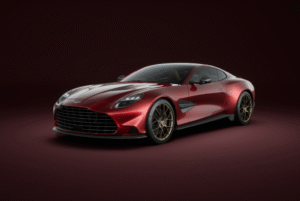
The Tata Safari, India’s resident flagship car, made its grand entrance in 2021 with one goal: to blend iconic heritage with cutting-edge innovation. Fast forward two years, and this old dog’s got some new tricks up its sleeve.
Tata has clearly hit the drawing board with a fierce focus on sleek and contemporary design. We’ve seen it in the Altroz, the Nexon twins, and the suave Harrier. So, the new Safari couldn’t afford to be the wallflower in this stylish lineup. It had to strut its stuff and show the world what it’s made of.
The new Tata Safari, while preserving its original character, has received a noticeable facelift, bringing it in line with contemporary design trends.
One of the key elements in the modern automotive landscape is the abundance of in-car features, often perceived as a measure of a vehicle’s desirability. Tata, in tune with this trend, has equipped the Safari with a profusion of features to meet the diverse expectations of today’s car buyers.
So, how do these elements come together to shape the flagship product from Tata Motors?
Tata Safari Exterior
The updated Tata Safari does exudes a sportier look but at the same time it retains its sophisticated exterior design. The front fascia has witnessed a makeover, featuring a new grille, redesigned vertical housings for fog lamps and headlights, and an extended DRL bar connecting the sequential DRLs.

While the side profile sees minimal changes, with redesigned 19-inch alloy wheels being the most prominent, the absence of excess chrome gives the Safari a visually striking profile.
At the rear, Tata continues the chrome-free approach, with a continuous LED bar connecting the tail lights and offering a powered open option for the trunk door.
2023 Tata Safari Cabin
The Safari’s cabin has received a significant upgrade, exuding a premium ambiance. The feature list and upholstery updates push the envelope, elevating the vehicle’s status to compete with models in higher segments. The top-end accomplished variant sports a dual-tone color scheme, although maintaining the pristine condition of the white seats might be a challenge.

The layered dashboard features an artificial wood panel, adding a touch of sophistication. The central section houses a 12.3-inch display unit supporting Apple CarPlay and Android Auto, offering customizable layouts for the driver’s preferences.

The four-spoke steering wheel comes equipped with mounted controls and features an illuminated Tata logo. This layout makes it easy to access the advanced driver-assistance system (ADAS) functions.

In terms of convenience, the Safari leaves no stone unturned, offering dual-zone climate control, air purification, front and mid-ventilated seats, a voice-activated panoramic sunroof, Alexa to Home technology, and remote access to the vehicle.

While the interior space remains consistent, offering ample room for passengers in all three rows, accommodating third-row passengers comes at the cost of a compromised boot space, a common trade-off in this segment.

Behind The Wheel: Tata Safari
The familiar two-liter turbo-diesel engine, churning out 168bhp and 350Nm of torque, remains unchanged in the facelifted model. Even in the larger Safari, it delivers consistent performance.

Thanks to ample low-end and mid-range power, overtaking is a breeze, even when the SUV is fully loaded. Surprisingly, for a diesel engine, it maintains a decent level of refinement. While it becomes more audible at higher revs, it doesn’t transmit excessive vibrations to the cabin or the steering wheel.

You have a choice between the six-speed manual and the six-speed torque converter automatic transmissions for this engine. The automatic, sourced from Hyundai, complements the Safari’s character much better than the manual. Tata Motors now offers paddle shifters with this gearbox, but they leave much to be desired.
The paddle shifters don’t provide a satisfying tactile experience and appear somewhat unpredictable. They can only be used in ‘Sport’ mode, and if you accidentally engage them while driving in ‘City’ mode, the system will automatically switch to ‘Sport,’ accompanied by an annoying voice prompt.

Even in ‘Sport’ mode, manual control over the gearbox is limited. It prevents downshifting below 1500rpm, and in some cases, even 2000rpm, and won’t upshift at the redline, which defeats the purpose of having paddle shifters.
This limitation also means that fuel efficiency could be marginally affected if the car keeps reverting to ‘Sport’ mode every time you use the paddle shifters. Additionally, there’s an issue with inconsistent paddle feel – one paddle provides tactile feedback, while the other feels spongy.
Verdict
The updated Tata Safari continues to shine in the three-row SUV segment under ₹30 lakh (ex-showroom). Its exterior redesign, enhanced features, and quality interior have definitely raised the bar. The diesel engine and automatic transmission combination work seamlessly.
Nevertheless, Tata Motors should explore the addition of a petrol engine to cater to a broader audience. Despite these considerations, the Tata Safari remains a compelling choice for those seeking a well-appointed and spacious three-row SUV.


